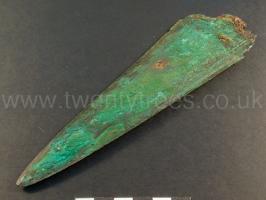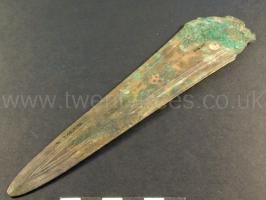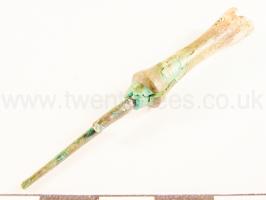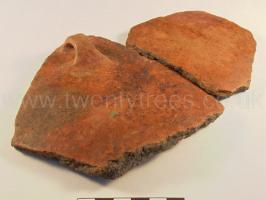Text this colour links to Pages. Text this colour links to Family Trees. Text this colour are links that are disabled for Guests.
Place the mouse over images to see a larger image. Click on paintings to see the painter's Biography Page. Mouse over links for a preview. Move the mouse off the painting or link to close the popup.
Winterbourne Stoke Barrow 16 G5 King Barrow is in Winterbourne Stoke Barrows.

Colt Hoare 1812. No. 16 [Winterbourne Stoke Barrow 16 G5 King Barrow [Map]]. This, and the preceding barrow, both for superiority of size, and elegance of form, may be justly considered as the two finest tumuli in this group: they stand so contiguous to each other, that their circumvallation somewhat interfere. The first mentioned, is 89 feet in base diameter, and 14 feet in elevation: the one, now the object of our inquiry, measures in its base diameter 112 feet, and about 15 feet in elevation. On making our section, we were surprised to meet with a large and heavy piece of fossil wood, of a calcareous nature, resembling a bunch of twigs. I cannot learn that there is any substance of the kind in this neighbourhood, and I am sure the earth of which the barrow is composed, could never have generated it. At the depth of nearly 15 feet, and immediately under the spot where the fossil wood was found, we came to a shallow oblong cist, in which a skeleton had been deposited within the rude trunk of an elm-tree1, with its head lying to the north-east, On the left side of the head, a beautiful urn had been deposited, but crushed to pieces by the heavy pressure of earth upon it. We were however fortunate in collecting sufficient fragments to enable Mr. Crocker to make out an exact drawing of its and outline. (Tumuli Plate XV.) This sepulchral urn is different both in shape and colour to any we have ever found in the British sepulchres. It resembles in tint the fine red Samian pottery, and appears to have been turned in a lathe; the form of the neck is neat, and the five handles are like those we see on the Roman vessels; yet with all these appearances, we have one criterion to judge by, which, I think, will prove it ta be of British manufacture, viz. that it is not more than half baked, and the fractures discover a black and sooty appearance within, not having been burned in a kiln, like the pottery of the Romans. Near the breast of the skeleton, lay the brass dagger No. 2. which had been guarded by a case of wood, part of which appeared to have been highly ornamented, as we found a bit of wood near it that had indentations which certainly had been gilt. The handle seems to have been made of box wood, and rounded somewhat like that of a large knife, Near it lay a brass pin with an ivory handle, No. g. On the same side, but near the thigh, was a fine spear-head of brass, No, 4, very perfect, and most elegantly moulded, (for I have no doubt of these articles having been cast in moulds), and another article or ivory. The rich contents of this tumulus has induced us to crown it with royal honours, and to give it the title of KING BARROW. I have often been asked, if the largest barrows were not found, on opening, to be the most productive in their contents? The question is very natural, and I have rather wished to second that supposition; but as yet I have not a basis for that hypothesis. In the present instance, indeed, there is some ground for the above remark.
Note 1. The knots and bark adhering to the tree, we were able to ascertain with certainty its distinct species some naturalists, however, suppose, that the elm was introduced from the Continent into England. at a comparatively modern period.
![]() Become a Member via our Buy Me a Coffee page to read complete text.
Become a Member via our Buy Me a Coffee page to read complete text.

Wiltshire Museum. DZSWS:STHEAD.23. 1 bronze dagger with 3 grooves either side and no ridge, found with a primary inhumation (in an elm trunk coffin) in bell barrow Winterbourne Stoke G5 [Map], excavated by William Cunnington.

Wiltshire Museum. DZSWS:STHEAD.24. 1 bronze dagger with 3 grooves either side and no ridge, found with a primary inhumation (in an elm trunk coffin) in bell barrow Winterbourne Stoke G5 [Map], excavated by William Cunnington.

Wiltshire Museum. DZSWS:STHEAD.25. 1 bronze awl with bone handle, found with a primary inhumation (in an elm trunk coffin) in bell barrow Winterbourne Stoke G5 [Map], excavated by William Cunnington.

Wiltshire Museum. DZSWS:STHEAD.73. 2 red burnished potsherds from a Breton Urn, one with a loop for suspension (there would have been five) found with a primary inhumation (in an elm trunk coffin) in bell barrow Winterbourne Stoke G5 [Map], excavated by William Cunnington.